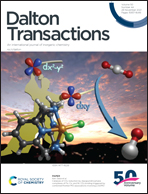Highly-stable PEN as a gas-barrier substrate for flexible displays via atomic layer infiltration†
Abstract
Polymer substrates with superior barrier properties are of great importance for the development of highly-stable flexible displays. The atomic layer infiltration (ALI) method has been utilized to integrate nanoscale inorganic materials in the subsurface of commercial PEN substrates, and the in-suit quartz crystal microbalance (QCM) is employed to study the growth behaviour as the process parameters vary, in which the nucleation and infiltration stages have been demonstrated. The O2 plasma pre-treatment prior to Al2O3 infiltration was used to determine its effect on the water vapor transmission rate (WVTR), and significantly improved barrier properties were observed compared to those of the ones without the O2 plasma pre-treatment via the electrical Ca tests, which was attributed to the surface clean and improved film adhesion. The lowest WVTR value measured was 1.28 × 10−5 g m−2 day−1 for the O2 plasma pre-treated PEN substrate coated with 100 ALI cycles, which improved 3–4 orders of magnitude compared to that of the pristine ones. Besides, the infiltrated PEN substrate with O2 plasma pre-treatment exhibited good mechanical stability, with only a slight increase of the WVTR value which was observed after the bending fatigue test with a radius of 5 mm. Furthermore, when applied to the encapsulation of organic light-emitting diodes (OLEDs), the normalized luminance remained above 94% after storage for 800 hours.

- This article is part of the themed collection: Spotlight Collection: Atomic and Molecular Layer Deposition


 Please wait while we load your content...
Please wait while we load your content...